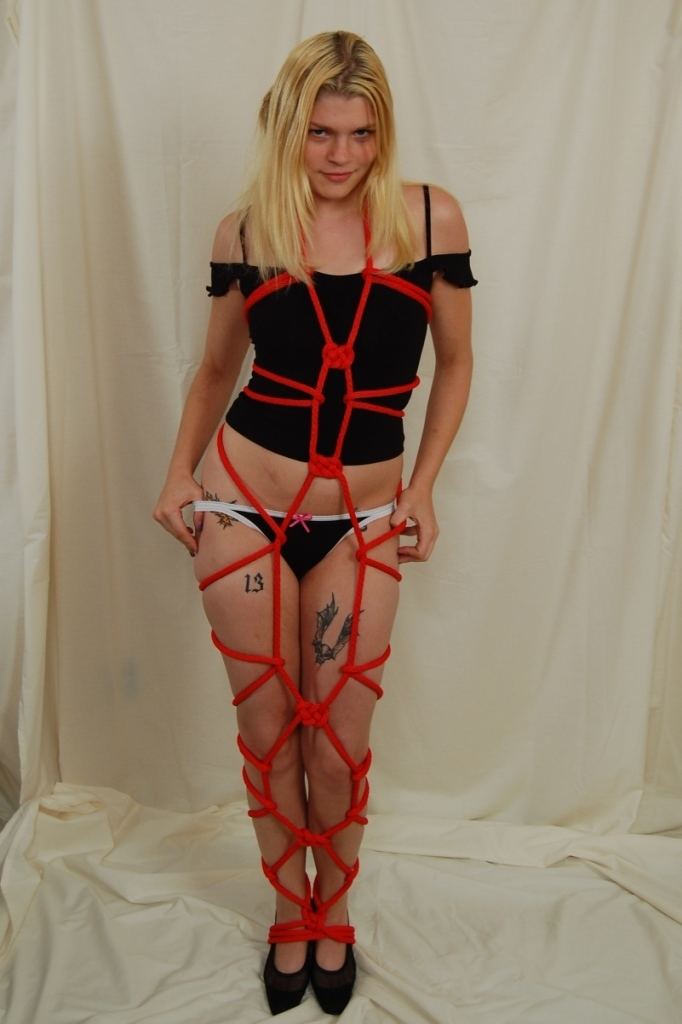 | ||
A bondage rope harness, sometime also referred to as a bondage web, rope web, rope dress or karada, is a rope bondage technique which involves the tying of an intricate structure of rope around the body in a complex web-like fashion.
Contents
A rope harness is similar in effect to a leather bondage harness, in that both are not in themselves normally used to bind a person, but are used to apply pressure over the area bound and can provide securing points for other bondage techniques, including suspension bondage.
A rope dress can also refer to a conventional dress which incorporates a significant amount of rope or thick weave, or is held up at the shoulders by a thin rope.
Technique
A rope dress typically takes around 10-15 m of rope to tie, and involves multiple passes of rope from front to back around the body to build up the characteristic diamond-shaped rope pattern, typically starting from a rope halter (as in the illustration) and moving down the body. In some cases, a rope harness may extend beyond the torso, into diamond-patterned webs that extend down the length of the arms or legs.
Though a rope harness is not normally used to bind the limbs, they can be used for that purpose by simply going around the arms not under. A rope dress can be used with a crotch rope or a shinju ("pearl") breast harness.
Japanese karada
The Japanese term karada means simply "body". Traditionally, a distinction was made between kikkou ("turtle-shell" pattern; hexagonal) and hishi (diamond) patterned ties, although many modern sources just use the term kikkou to refer to any rope body harness.
